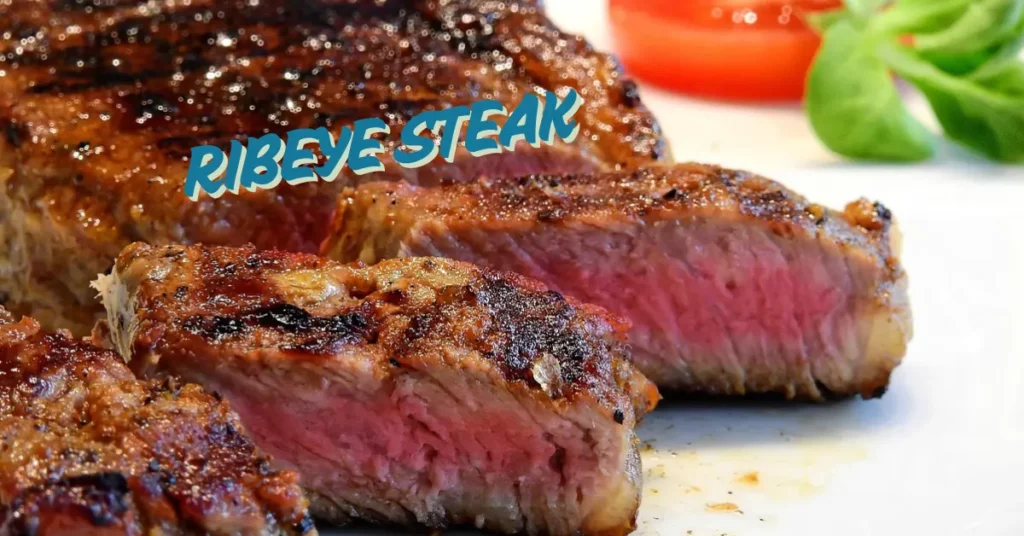This post may contain affiliate links. If you use these links to buy something we may earn a small commission. Thanks.
Grilling a ribeye steak to perfection is both an art and a science. A ribeye is known for its exceptional marbling, which contributes to its rich, buttery flavor and tenderness. However, achieving the perfect doneness requires precise timing, technique, and attention to detail.
In this guide, we will walk you through the process of grilling a 1-inch thick ribeye steak, from preparation to serving. Whether you prefer your steak rare, medium-rare, or well-done, understanding the right cooking time and techniques will ensure a delicious, juicy steak every time.
Preparing the Ribeye Steak
Before you even fire up the grill, proper preparation is essential to achieving the best results. Here’s how you should prepare your ribeye steak for grilling:
Choosing the Right Ribeye
- Select high-quality, well-marbled ribeye steaks for optimal flavor and tenderness.
- A 1-inch thickness is ideal for grilling, but you may adjust cooking times slightly if your steak is thinner or thicker.
- If possible, opt for prime or choice-grade beef for better marbling and taste.
Bringing the Steak to Room Temperature
- Remove the steak from the refrigerator at least 30-45 minutes before grilling.
- Allowing the meat to reach room temperature ensures even cooking.
Seasoning the Steak
- Basic seasoning: Generously season both sides with kosher salt and freshly ground black pepper.
- Enhanced flavor: Add garlic powder, smoked paprika, or fresh rosemary for an extra kick.
- Marinades & rubs: While ribeye doesn’t need a marinade, you can enhance its flavor with a light olive oil rub and fresh herbs.

Setting Up the Grill
Your choice of grill and heat settings play a significant role in achieving the perfect ribeye steak.
Gas vs. Charcoal Grill
- Gas grill: Easier to control temperature and provides consistent heat.
- Charcoal grill: Adds a smokier flavor due to the burning coals.
Preheating the Grill
- Preheat your grill to high heat (450-500°F) for direct grilling.
- Brush the grates with oil to prevent sticking.
Grilling Time for a 1-Inch Ribeye
The grilling time depends on your preferred level of doneness. Use a meat thermometer to ensure accuracy.
Direct Heat Grilling Method
Place the steak directly over the heat source and follow these guidelines:
| Doneness | Internal Temperature | Cooking Time (Per Side) |
|---|---|---|
| Rare | 120-130°F | 3-4 minutes |
| Medium-Rare | 130-135°F | 4-5 minutes |
| Medium | 135-145°F | 5-7 minutes |
| Medium-Well | 145-155°F | 7-8 minutes |
| Well Done | 155°F+ | 9+ minutes |
Flipping the Steak
- Flip the steak only once during grilling for an even sear.
- Use tongs, not a fork, to prevent juices from escaping.
Using a Meat Thermometer
- Insert a thermometer into the thickest part of the steak.
- Remove the steak 5°F before the desired temperature, as it will continue cooking while resting.
Resting and Serving
Why Resting Matters
- After grilling, let the steak rest for 5-10 minutes to allow the juices to redistribute.
- Cover loosely with aluminum foil to retain warmth.
Slicing the Steak
- Always cut against the grain for maximum tenderness.
Suggested Side Dishes
Pair your grilled ribeye with:
- Garlic mashed potatoes
- Grilled asparagus
- Creamed spinach
- Classic steakhouse wedge salad
Additional Tips for Perfect Grilling
Reverse Searing for Better Crust
- If you have extra time, try the reverse sear method:
- Cook the steak indirectly at a lower temperature (225-250°F) until it reaches 10-15°F below your target temperature.
- Finish by searing over high heat for 1-2 minutes per side.
Butter Basting for Extra Flavor
- During the final minutes of grilling, add a mix of butter, minced garlic, and fresh herbs on top for extra richness.
Avoid Common Mistakes
- Overcooking: Use a thermometer to prevent dryness.
- Skipping resting time: This leads to juice loss.
- Excessive flipping: Only flip once for a proper sear.
- Pressing the steak: Avoid pressing with a spatula, as it releases essential juices.
Conclusion
Grilling a 1-inch ribeye steak is simple once you understand the right techniques. By choosing high-quality meat, properly seasoning it, and grilling at the correct temperature, you can achieve restaurant-quality results at home. Remember to use a thermometer, allow the steak to rest, and pair it with delicious sides for the perfect meal.
With practice, you’ll master the art of grilling ribeye steaks to your preferred doneness, making every backyard barbecue a flavorful success.
